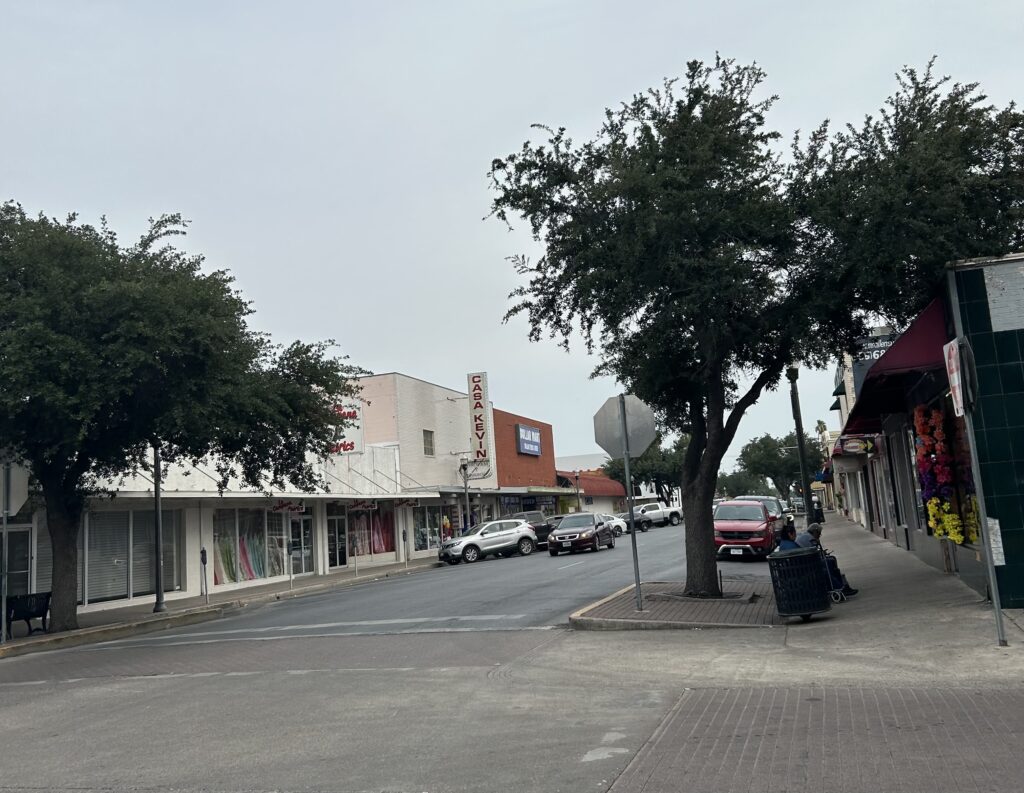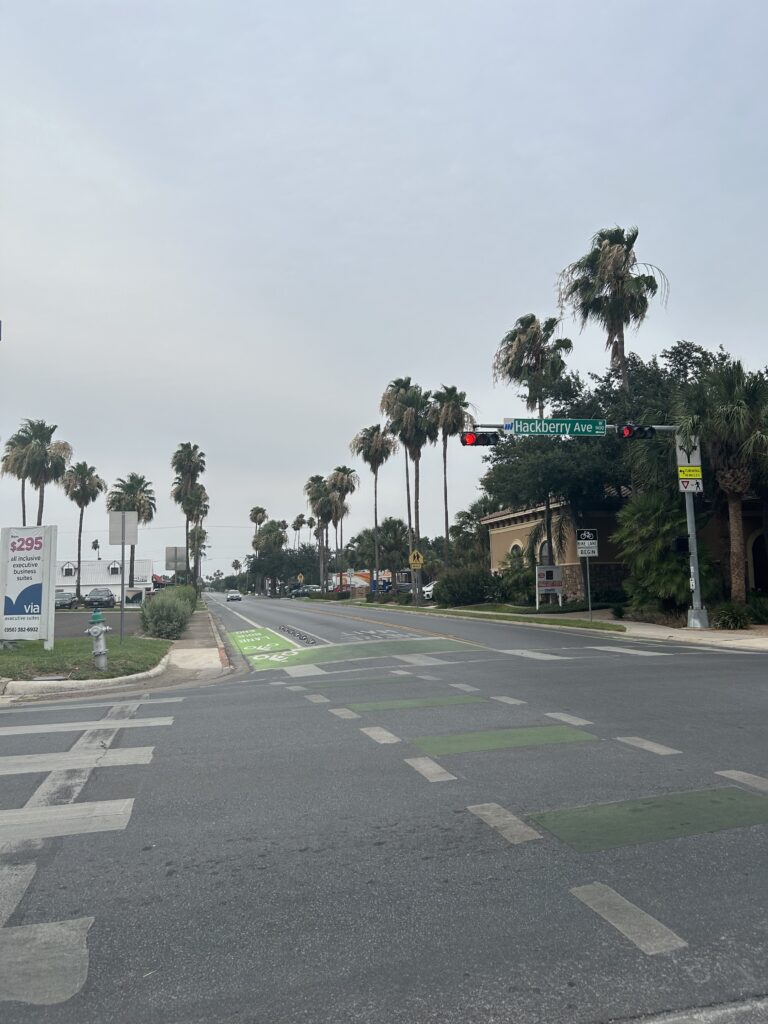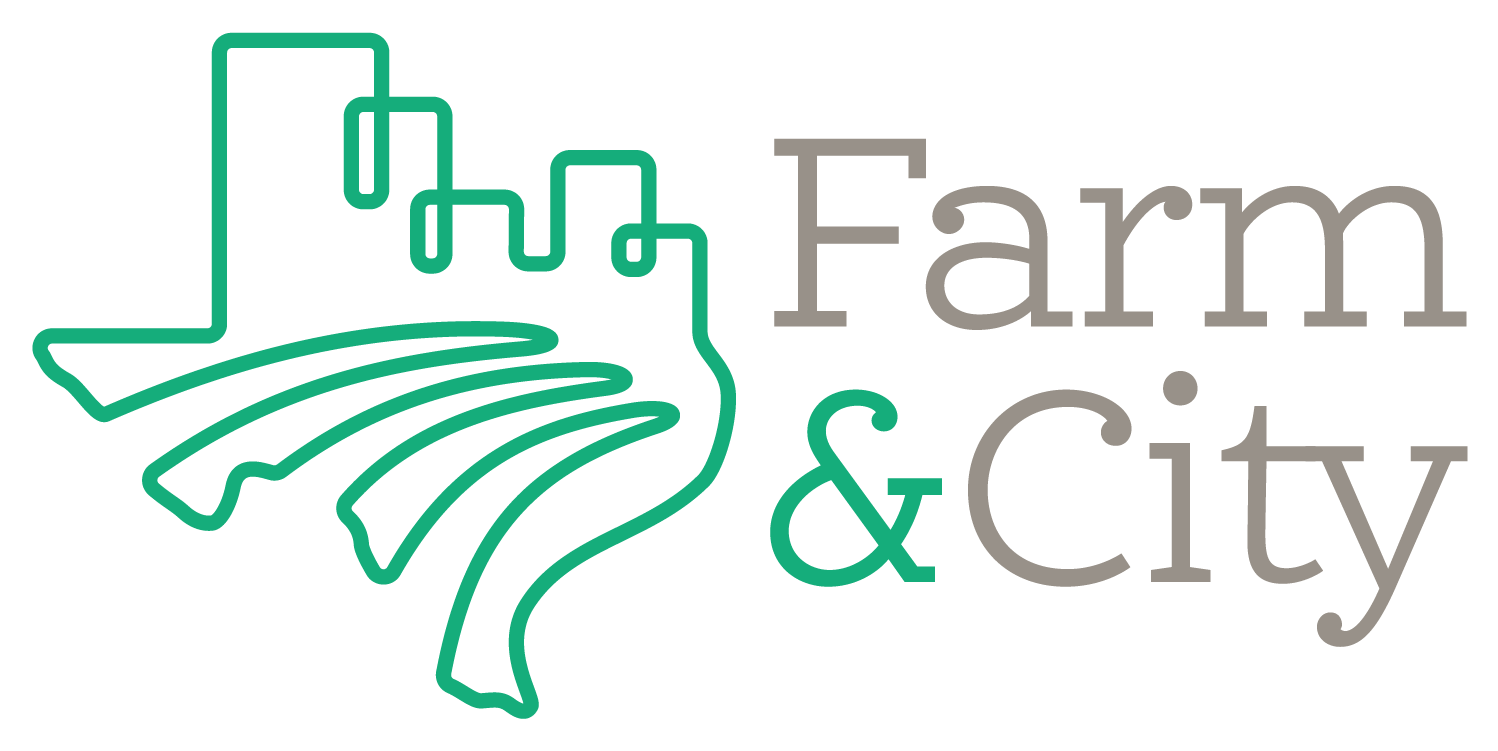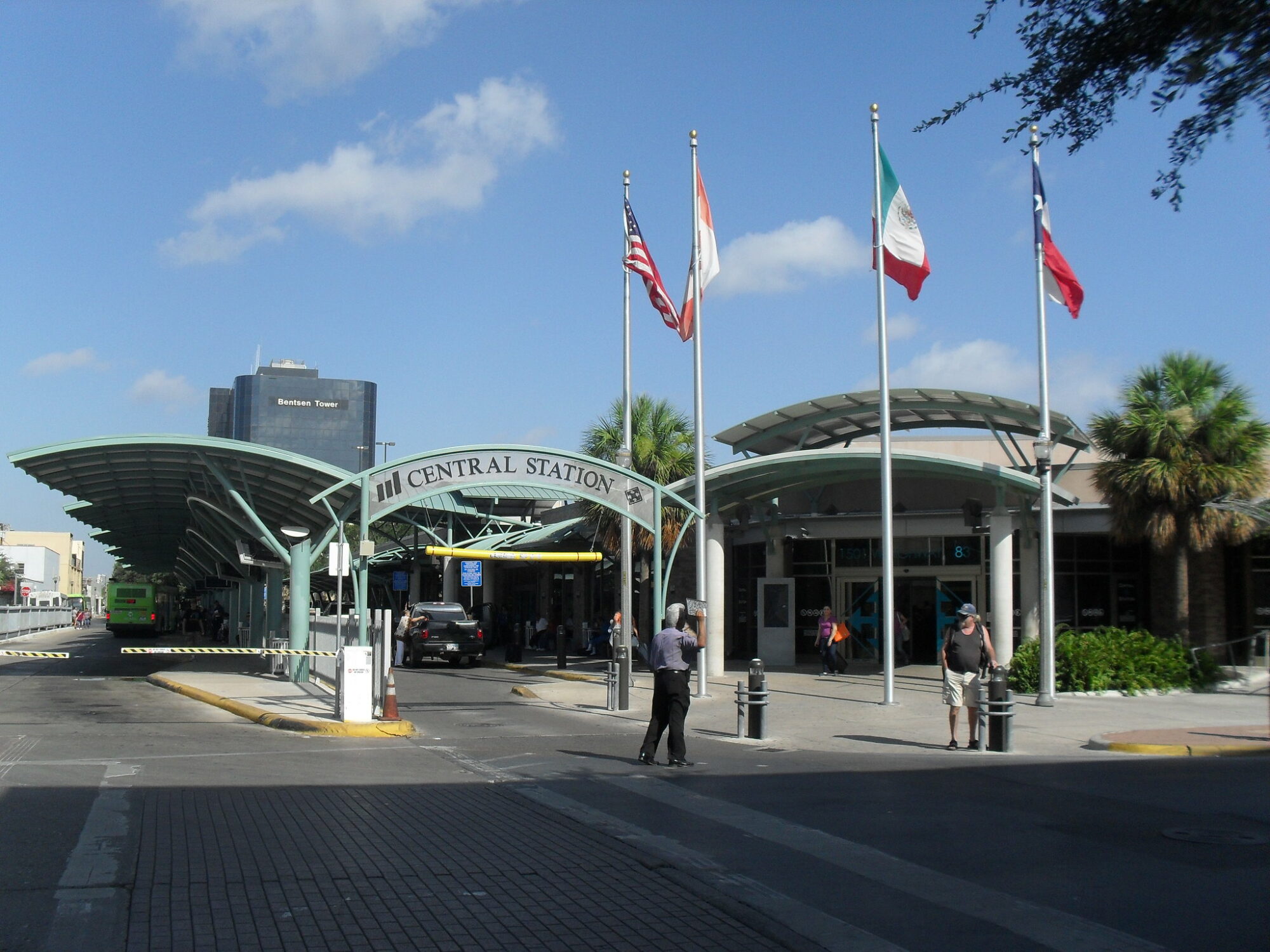If you take a trip to the Rio Grande Valley, you can find many hidden gems of good urbanism. The Valley punches above its weight, with an abundance of cities with lively streets and energetic downtowns. While in the Valley for a Safe Streets for Texans training, we had the pleasure of exploring the vibrant, well-designed downtown McAllen, spending an evening walking along Main Street and its surroundings, and were impressed by many design features that make it an inviting space.
Downtown McAllen has a tight street grid populated by many bars, restaurants, import stores, and party suppliers. Many small shops serving RGV favorites like eloté and raspados fill the pockets between bigger businesses, providing the perfect refreshment stops during a shopping trip. In terms of design, McAllen is doing many noteworthy things to uplift the space. The sidewalks are wide, and the buildings sit close to the street, framing the setting nicely for people walking about.
Downtown McAllen has many features that encourage drivers to drive as safe speeds around downtown while allowing pedestrians free movement. At most intersections, you will find semi-raised crosswalks for this purpose. Additionally, diagonal parking spaces line the streets, protecting pedestrians while subconsciously forcing drivers to exercise more caution.
The most innovative yet subtle traffic-calming approach I noticed was McAllen’s multi-faceted use of curb extensions. Urban designers often use curb extensions at intersections to shorten the crossing distance for pedestrians and narrow the roadway for cars, but McAllen doubles their usefulness. In each of the many curb extensions in downtown McAllen, large oak trees stand over quaint benches, adding beauty to the streetscape and giving people a chance to sit in the shade on hot summer days. Design features like this are so easy to overlook, but they add incredible value to a street!

Unfortunately, Business Highway 83, the infamous stroad that runs through the Valley, breaks the harmony of downtown McAllen’s urbanism. But North of Highway 83, McAllen has recently upgraded the pedestrian and cycling infrastructure on Main Street. In the last year, the city has turned Main Street from a car-oriented two-lane road with extremely wide lanes and ample free parking into a street that encourages cycling and walking.
How did they do this so quickly? Well, it did not take any heavy construction! McAllen repainted the road, swapping parking for bright green bike lanes and narrowing automobile lanes. At intersections, they put in armadillo barriers that provide physical protection to cyclists and pedestrians and prevent drivers from taking right turns at high speeds. Further, signaled intersections now specifically state that drivers must yield to pedestrians and cyclists. Without breaking the bank, McAllen made North Main Street a much more pedestrian-friendly place.

Like all cities in Texas, McAllen still has work to do to achieve high quality safe, walkable urbanism, but it has a superb backbone in its walkable downtown and is making active efforts to make other parts of the city safe for people of all ages and abilities to navigate using their chosen mode of transportation. A visit to McAllen is well worth it for any urbanist, lover of Tex-Mex food, or combination of the two.

